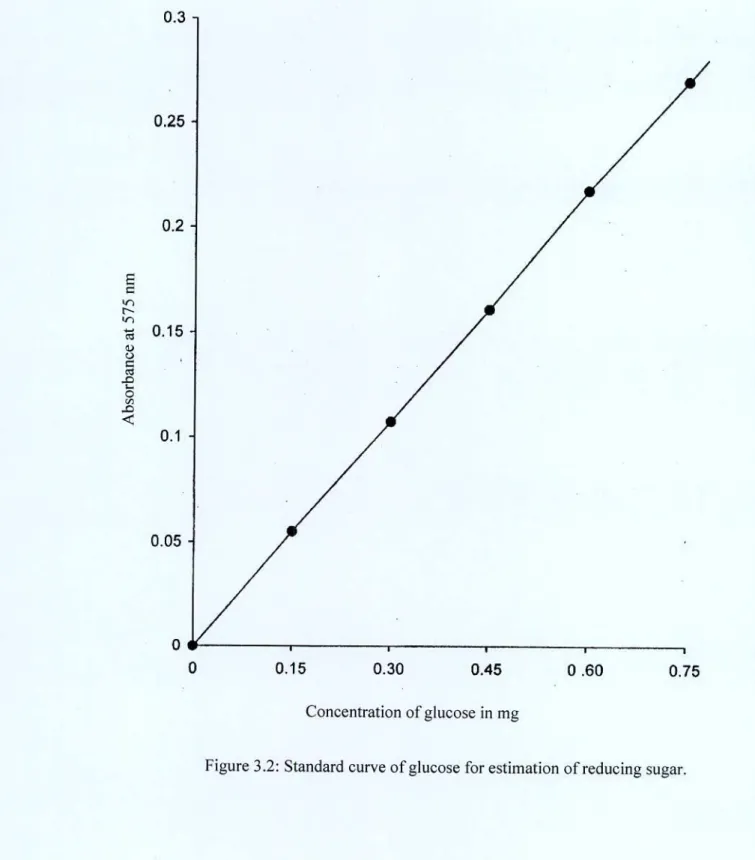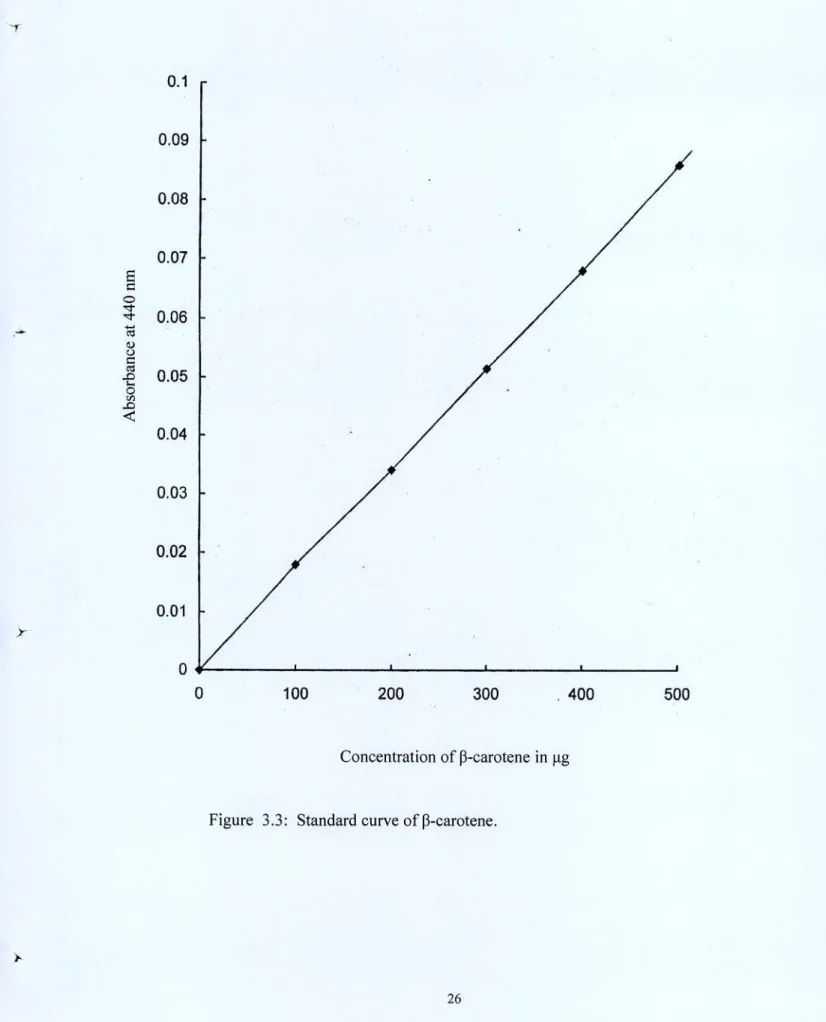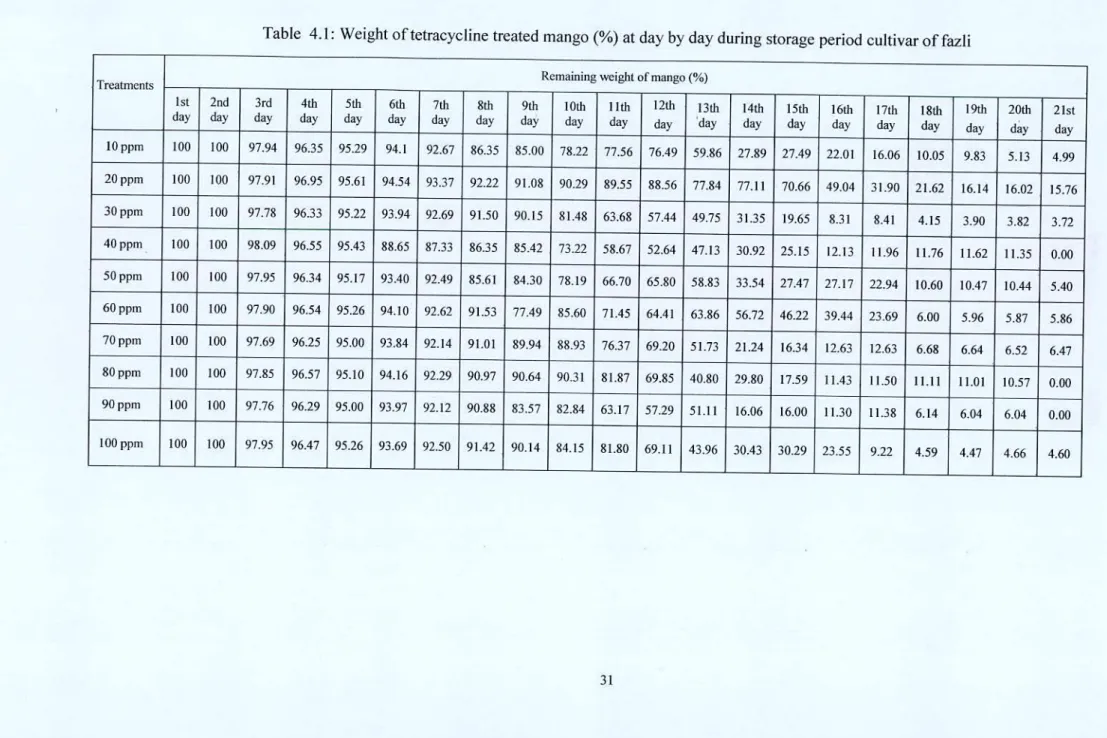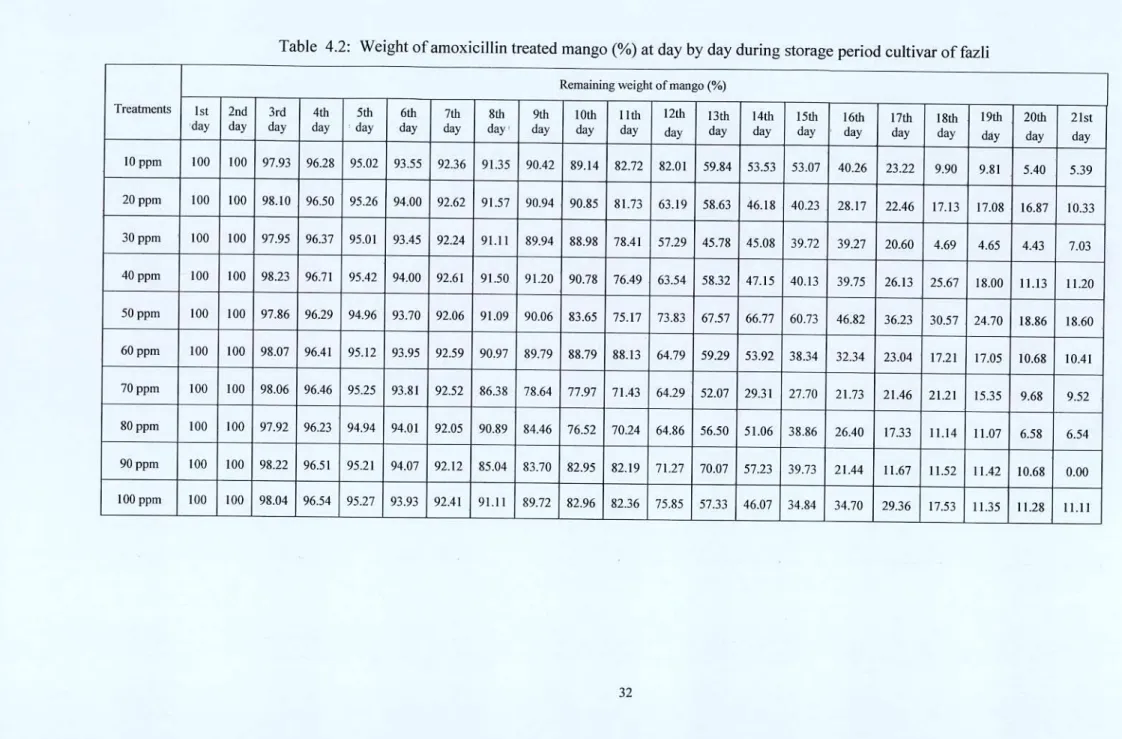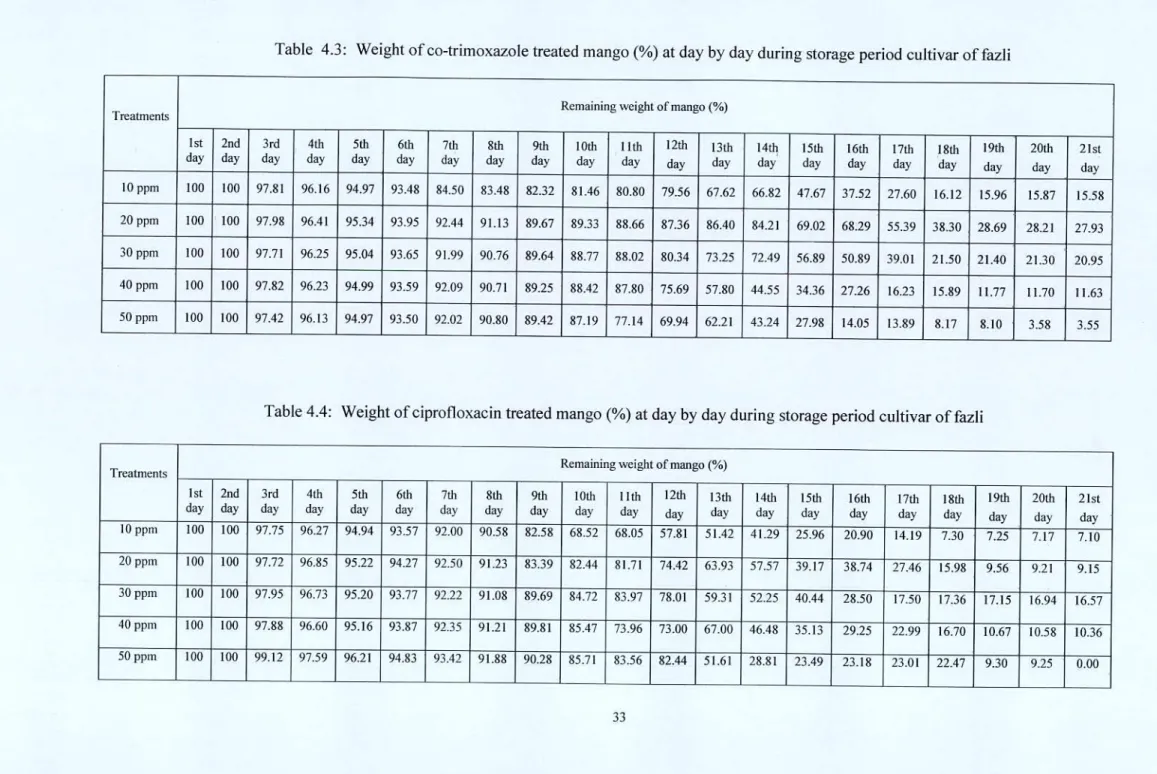Arifuzzaman Khondokar at Department of Chemistry, Khulna University of Engineering & Technology, Khulna, Bangladesh. Abdul Motin, Professor, Department of Chemistry, Khulna University of Engineering & Technology, for his encouragement and cooperation during this research work. The physical properties such as appearance, color, flavor, taste and texture of all antibiotic-treated mangoes were more attractive than that of the control mango.
The shelf life of the treated mango was significantly increased compared to the control. Weight loss control capacity of antibiotic treated mango at 20 ppm tetracycline, amoxicillin 50 ppm, co-trimoxazole 20 and 30 ppm, cephradine 50 ppm, azithromycin 20 ppm was greater than control mango. Compared to the control mango, it is obvious that the antibiotic-treated mango would be of better quality, containing more vitamin A, vitamin C, total soluble solids, total sugar, iron (Fe) and pH than that of the control group.
49 Weight of control mango (%) by day by day during storage period cultivar of fazli 36 4.10 The grading of control and antibiotic treated mango as assessed by the panel of.
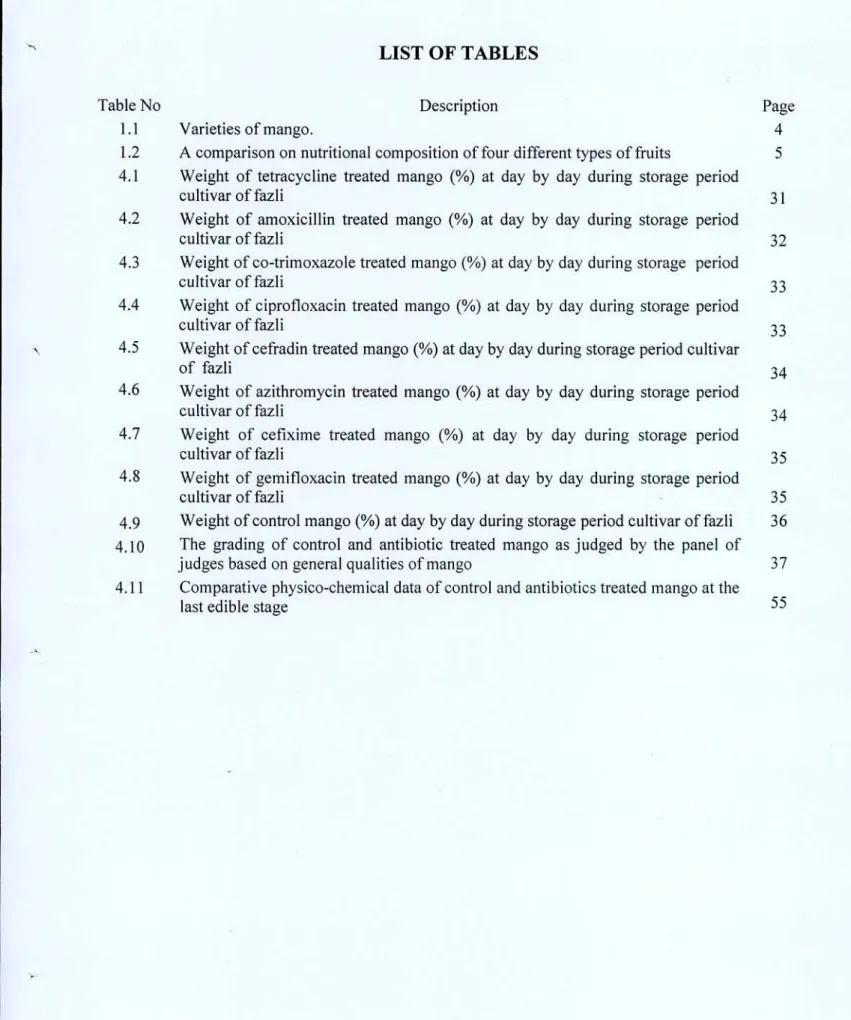
Species varieties
Vavilov [8] also believed that the mango originated in the Indo-Burma region. Bangladesh is proud to be the home of mango, one of the most important fruits in the world. The Twelfth International Congress of Horticulture, held in Berlin in 1938, recognized the importance of variety description and classification as a fundamental aspect of fruit research.
Mukherjee [16] who described 72 varieties of Bengal, Bihar and Uttar Pradesh, while Naik and Gangolly [17] who described 335 varieties of South India also used vegetative characters. The cultivated mangoes in different regions of the world belong to different species, but the mango varieties in Bangladesh belong to Mangèra indica L. However, there are many more varieties which are not yet commercially important but are maintained at the family level [7].
Nutritional and medicinal value of mango
In the initial stages of fruit development, no systematic trend in sugar content was observed, but towards the end of maturity, both reducing and non-reducing sugars were found to be increasing [20]. Pathak and Sarada reported that pulp lipid content of five mango varieties varied from at harvest [22], while pulp chlorophyll became negligible as the fruit approached maturity [23]. The composition of the carotenoids in Badami (Aiphonso) mangoes was characterized by Subrayan and Cama [26] at three stages of maturity-unripe, partially ripe and fully ripe stages, they found 14, 15 and 17 different carotenoids respectively.
The red blush in haden mango is attributed to the presence of anthocyanin and peonidin-3-galactoside [27]. The smoke-burning leaves are believed to be effective against hiccups and various throat problems. The barked and sugared pulp of unripe fruits is considered very useful for cholera and plague patients.
The gum of the tree and the resinous substance expelled from the stem end of the ripe fruit are mixed with lime juice and given in cases of skin affections and scabies.
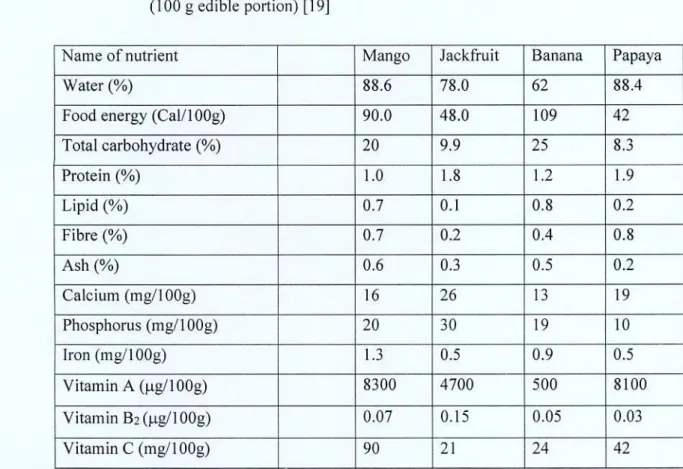
In which way mangoes are infected
Antibiotics
- Tetracycline
- Amoxicillin
- Co-trimoxazole
- Ciprofloxacin
Penicillins are antibiotics, which means they are used to treat infections caused by bacteria and to kill the bacteria themselves. Amoxicillin fights bacteria by preventing them from forming a cell wall and preventing them from growing. Trimethoprim/sulfamethoxazole (TMP/SMX) or co-trimoxazole (BAN) is an antibiotic used to treat a variety of bacterial, fungal, and protozoan infections.
It is an antifolate agent and functions by inhibiting both de novo folate biosynthesis and metabolism. The spectrum of activity includes most strains of bacterial pathogens responsible for respiratory, urinary tract, digestive and abdominal infections, including gram-negative (Escherichia co/i, Haernophilus inJluenzae, Kiebsielki pneumoniae, Legioneila pnewnophila, Moraxeila cataris. and Pseudornonas aeruginosa), and gram-positive (methicillin-sensitive, but not meth icill in-resistant Staphylococcus aureus, Streptococcus pneurnoniae, Staphylococcus epidermidis, Enterococcus faecalis and Streptococcus pyogenes) bacterial pathogens. Ciprofloxacin and other fluoroquinolones are valued for this broad spectrum of activity, excellent tissue penetration, and for their availability in both oral and intravenous formulations [38].
Cefradine
Azithromycin
Gemifloxacin
Cefixime
In addition to these changes, microbial spoilage also contributes to postharvest losses during ripening and storage. The shelf life of a fruit can be significantly extended by slowing the process leading to ripening and controlling microbial spoilage. The physicochemical changes during ripening and storage should be extensively studied to develop a more effective technique for extending the economic storage life of mango.
The nutritional and edible qualities of mangoes are affected by the application of post-harvest treatments and also by harvesting the fruits at different stages of maturity. Several authors [46–49] studied the postharvest losses and physicochemical changes during ripening and storage of mango. Therefore, detailed studies are needed to develop a technology that will delay the ripening process of the commercial varieties of fazli mango in Rajshahi zone.
Studies are also needed to reduce post-harvest losses and extend the shelf life of fazli mangoes.
Effects of preservatives on the shelf life and post harvest losses of mango
Treatments and determination of shelf life
Physical properties and chemical analysis
- Determination of pH
- Estimation of total titrable acidity
- Determination of moisture
- Determination of total soluble solids (TSS)
- Determination of total sugar
- Determination of reducing sugar
- Determination of non-reducing sugar
- Estimation of ascorbic acid (vitamin C)
- Estimation of 13-carotene
- Determination of total protein
- Determination of iron
The electrode assembly was lifted, washed with distilled water, rinsed with cultivar juice, and dipped in mango pulp juice. Extraction of mango pulp juice: The mango pulp juice was extracted following the same procedure as previously described. The percentage of total titratable acidity present in the mango pulp was determined using the formula below.
The total sugar content of mango pulp was determined calorimetrically by the enthrone method as described in the Laboratory Manual in Biochemistry [60]. Extraction of sugar from mango pulp was carried out according to the method described by Loomis and Shull [61]. The amount of total sugar content in mango pulp was calculated by constructing a calibration curve using glucose as a standard.
Finally, the percentage of total sugar present in the mango pulp was determined using the formula given below. The amount of reducing sugar content in mango pulp was calculated by constructing a calibration curve using glucose as a standard (Figure 3.2). The amount of ascorbic acid present in the mango pulp was determined by comparing with the titration result of the standard ascorbic acid solution.
Amount of ascorbic acid in mango pulp (mg per 100 g of mango pulp) Amount of ascorbic acid obtained. Mango pulp 13-carotene was determined according to the procedure described in Methods of Vitamin Analysis [64] and Methods of Biochemical Analysis [65]. The amount of 13-carotene in mango pulp was calculated using a standard curve (Figure 3.3).
The protein content of treated and untreated mango pulp was determined by the Micro-Kjeldahl method [66]. 1-2 g of mango pulp was placed in a weighed porcelain pot (which had previously been cleaned and heated to approximately 100°C, cooled and weighed). The amount of iron (%) in mango pulp was calculated using the formula below.
Amount of iron in the mango pulp (mg per 100 g of mango pulp) OD of sample x 0.1 x Total volume of ash solution x 100 OD of standard x 5 x Weight of sample taken for ashing.
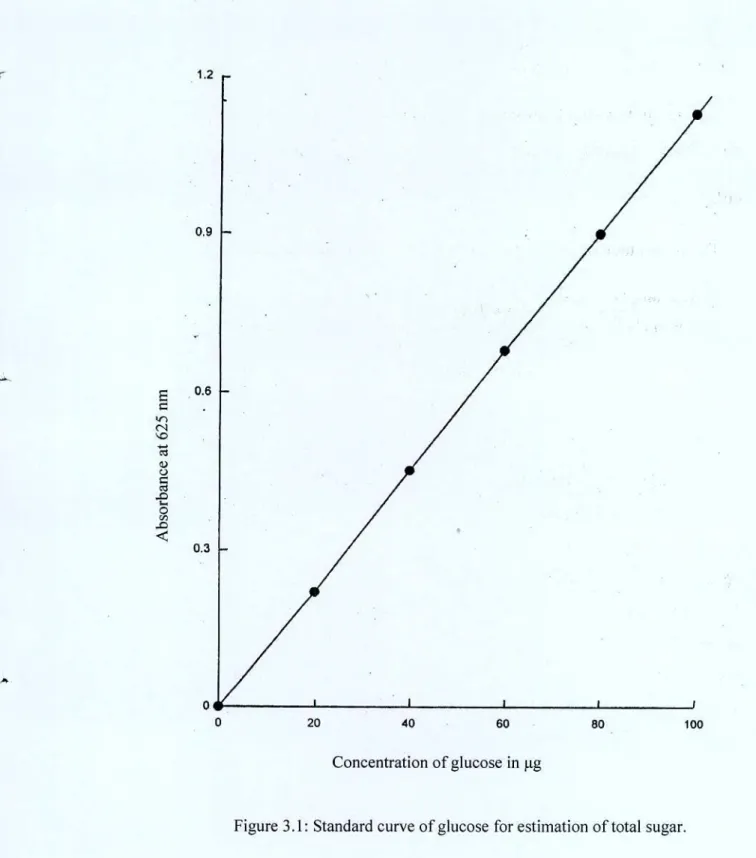
Effects of antibiotics on the shelf life of fazli mango
Effects of antibiotics on general quality
Effect of antibiotics on physical appearance
But at the final edible stage the pH was found to range from 5.24 to 6.32 in the antibiotic treated mango pulp, while it was found to be 5.19 in the control mango pulp. Total soluble solids (TSS) of mango pulp: TSS was found to be higher in antibiotic treated mango pulp than that in control mango pulp (table 4.11). At the final edible stage, the TSS content ranged from 11.5% to 19% in the pulp of the antibiotic-treated mango, while it was found to be 10% in the control mango.
Moisture content of mango pulp: As given in Table 4.11, the moisture content in mango pulp was found to be higher in antibiotic treated mango pulp than that of control mango pulp. During ripening, the moisture content of mango pulp of antibiotic treated mangoes was found to vary between 84-87%, while it was found to be about 82.66% in control pulp. Ascorbic acid (vitamin C) content of mango pulp: As presented in table 4.11, the ascorbic acid content of mango pulp, as shown in table 4.11, was found to be higher in mango pulp treated with antibiotics than that in control mango pulp.
Protein content of mango pulp: As presented in Table 4.11, like acidity, protein content of mango pulp was found to be higher in antibiotic treated mango pulp than in control mango. At the final edible stage, protein was found to vary between 0.60% and 1.03% in antibiotic-treated mango pulp, while it was found to be 0.57% in control mango pulp. Total sugar content of mango pulp: As presented in Table 4.11 as pH & TSS, total sugar content of mango pulp was found to be higher in antibiotic treated mango pulp than those in control mango pulp. .
At the final edible stage, total sugar was found to vary between 11.53% to 12.39% in antibiotic treated mango pulp, while it was found to be 10.90% in control mango. Reducing sugar content of mango pulp: As indicated in Table 4.11, like pH & TSS, the reducing sugar content of mango pulp was also increased in antibiotic treated mango pulp. At the final edible stage, the reducing sugar was found to vary between 4.73% to 5.46% in antibiotic treated mango pulp, while it was found to be 4.60% in control mango pulp.
Non-reducing sugar content of mango pulp: As given in table 4.11 like p1-I & TSS, the higher non-reducing sugar content of mango pulp was found in mango pulp treated with antibiotics than that in control pulp. At the final edible stage, the non-reducing sugar was found to be varied between 6.50% to 8.00% in antibiotic treated mango pulp, while it was found to be 6.30% in control mango.
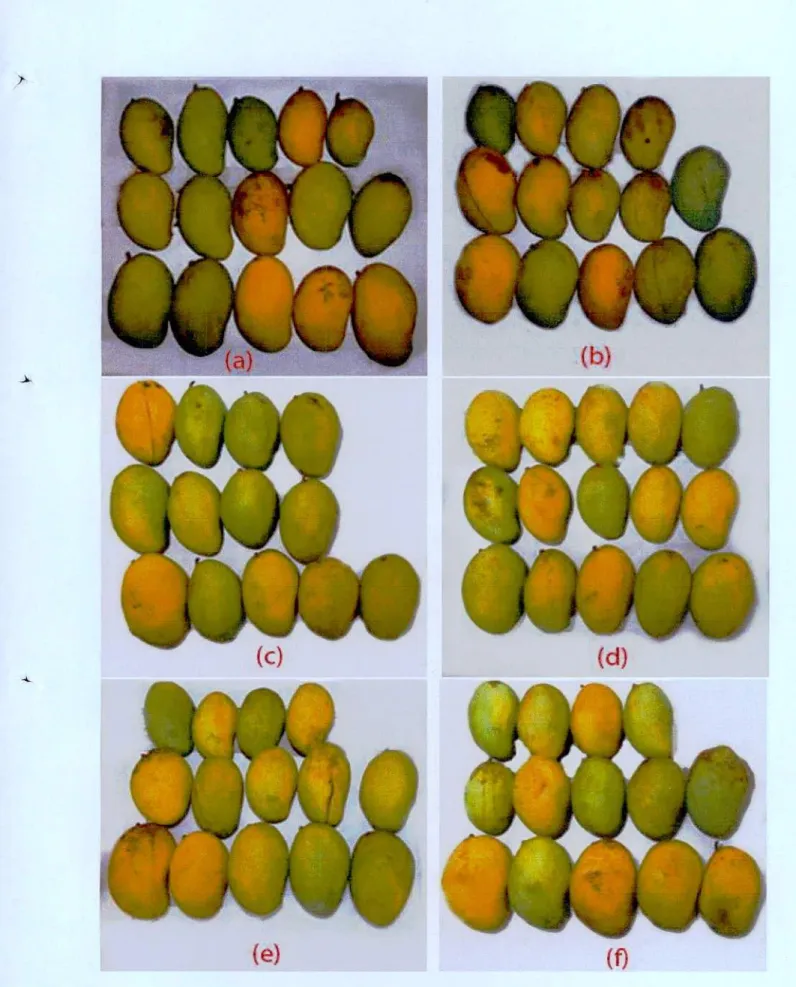
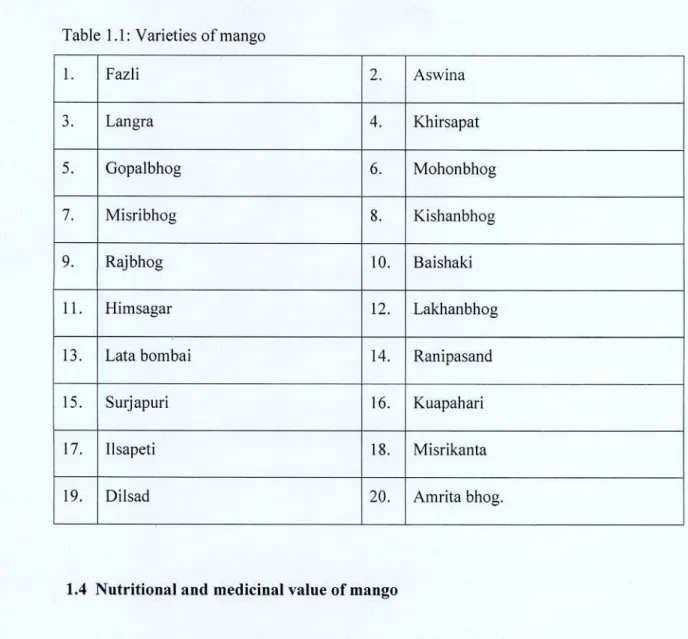
![Figure 2.1: Some infected mangoes [29].](https://thumb-ap.123doks.com/thumbv2/filepdfnet/10910051.0/16.871.34.826.67.1153/figure-2-1-some-infected-mangoes-29.webp)
